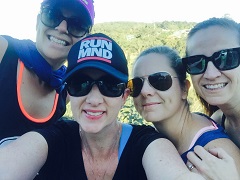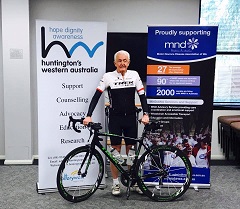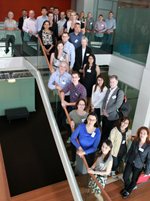A great turn out for our Walk to d'Feet MND Canberra
What a wonderful roll up we had in Canberra for our Walk to d’Feet MND. Over 450 people turned out on a chilly but sunny Canberra morning to show their support for people living with MND. This year we were able to do the Walk around Lake Burley Griffin and what a great atmosphere we had as families and friends headed off around the Lake. It’s always a stunning sight watching that 'sea of blue with a purpose' as the walkers head off. A big thank you to Nigel Ah Wong from the ACT Brumbies who helped promote the Walk in the lead up to the Walk, and also led the Walk on the day.




